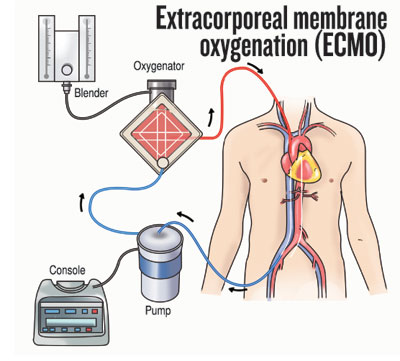News
ECMO saves Chanduli’s life

Chanduli’s family ready to take her home after her ordeal. Pix by Ranjith Perera
All smiley is the slip of a girl in a green frock as she walks into a roomful of people – some clad in saree, some in shirt and tie and others in uniform, who clap enthusiastically.
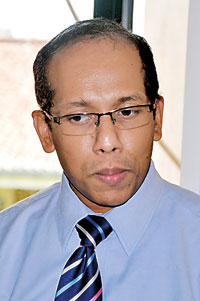
Dr. Gihan Piyasiri
The little star of this show, 11-year-old Chanduli, was going home that day and it was to bid goodbye to all those at the Karapitiya Teaching Hospital who pulled her back from the brink of death that she was there.
It had been touch-and-go for this victim of chlorine-gas poisoning and the expressions of her family indicate how close a call it had been, while a closer look also indicates her breathing to be still a little difficult.
Nobody thought she would live, was the general consensus but a machine installed at the Karapitiya Hospital and the skill and dedication of teams headed by Consultant Cardiothoracic Surgeon Dr. Tolusha Harischandra and Consultant Paediatrician Dr. Kapilani Withanaarachchi, along with many other specialties have proved them wrong.
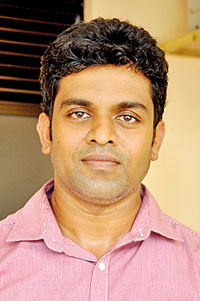
Clinical Perfusionist Amila Buddhika
The life support administered to critically-ill Chanduli was extracorporeal membrane oxygenation (ECMO) – that uses a pump to circulate blood through an artificial lung and send it back into the bloodstream, providing heart-lung bypass support outside the body.
For this family, father Ranjith Rubasinghe, mother Dr. Ajitha Hewagama and daughters Manduli (18), Randuli (15) and Chanduli, Sunday – May 12, was a normal day.
Every Sunday evening, it was water ballet from 6-8 p.m. for Chanduli at a swimming pool in a stadium complex in Colombo 7. Having dropped her there, her parents had left to attend to a few chores as they had done many times before, when a parent-friend called to inform them urgently that Chanduli was ill.
“Come soon,” said the friend and Ajitha recalls how they arrived at the pool in six minutes.
What they saw left them in shock – Chanduli, still in her swim-suit was battling to breathe. She was spluttering and wracked by coughing. Taken to the shower, she had collapsed and was unconscious. The talk was that it was a chlorine allergy.
Her father and mother had quickly put her into the vehicle and jumped many a red light on their way to the Lady Ridgeway Hospital (LRH) for Children in Colombo.
The staff there had gone into action immediately, taking her to the Intensive Care Unit (ICU) and resuscitating the unconscious Chanduli, who was in severe respiratory distress.
“It was very difficult to get the oxygen (O2) levels in her blood up, while her frail body was also undergoing seizures,” recalls Ajitha who is a doctor.
Day 2 and Day 3, the parents watched in agony but all Chanduli’s gas parameters had got deranged. Chanduli was on the ventilator. The mucosa in her lungs had got burnt for the chlorine, turning white. The high levels of carbon dioxide (CO2), a major hazard for human beings, could not be brought down.
Even with everything possible being done, Chanduli’s condition was deteriorating and was “very bad”. The distraught family was then told about “a last resort” available at the Karapitiya Hospital.
It was ECMO and it was at the Karapitiya Hospital that there was a trained team………but high were the risks in transferring this very ill patient, for she was intubated and on the ventilator.
But transfer they did and as the ambulance from the LRH, lights flashing and sirens screaming, got off the expressway and drove into the Karapitiya Hospital, the team there was ready and waiting to take her without a moment’s delay to the Cardiothoracic ICU.
There were nail-biting moments on the ambulance, says Ajitha when five or six times, life was about to slip out of their daughter, but there was also “great hope”.
All the blessings showered on “Chandu” by her school, relatives and lots of people across Sri Lanka, she believes helped immensely as also the major effort of the Karapitiya team.
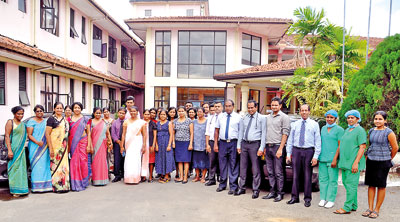
The dedicated team of the Karapitiya Teaching Hospital
Consultant Cardiothoracic Surgeon Dr. Harischandra, Consultant Paediatrician Dr. Withanaarachchi, Consultant Anaesthetist Dr. Gihan Piyasiri who is in charge of the ICU, Clinical Perfusionist Amila Buddhika were there along with their teams. By their side throughout was also Dr. Richard Firmin from the United Kingdom who had heavily supported the introduction of ECMO at the Karapitiya Hospital a while back.
The battle to save Chanduli’s life is detailed by Dr. Harischandra. “As soon as she was wheeled in, unconscious and with lots of tubes snaking into her body, we did the cannulation and established ECMO and within half-an-hour her condition stabilized.”
Explaining the procedure, Dr. Harischandra says that a draining cannula was positioned in the inferior vena cava at the level of the liver. This enabled the blood, heavy with CO2 but having less O2, to be sent through the machine. Then the machine removed the high levels of CO2 and oxygenated the blood and pumped the blood back to Chanduli’s heart through a cannula inserted at the neck.
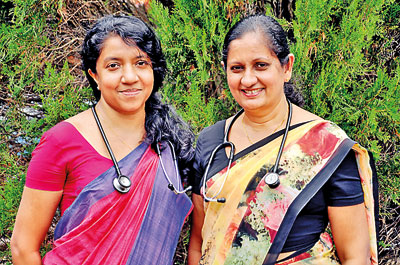
Partners in saving lives: Dr. Tolusha Harischandra (left) and Dr. Kapilani Withanaarachchi
“ECMO did what the lungs usually do – removing all the excess CO2 from her body and restoring the O2. This way, all organs were also kept alive, while the damaged lungs rested and recovered,” she said.
Attached to the ECMO machine for a long time, another major challenge was the prevention of an infection from getting hold of Chanduli’s already embattled and weak body.
The efforts of a multidisciplinary team including the general paediatric and cardiothoracic staff, perfusionists, paediatric intensivists, paediatric pulmonologists, paediatric neurologists, paediatric nephrologists, microbiologists, virologists, physiotherapists and radiology staff ensured that after a stay at the Karapitiya Hospital from May 15-June 3, Chanduli returned home without mishap.
